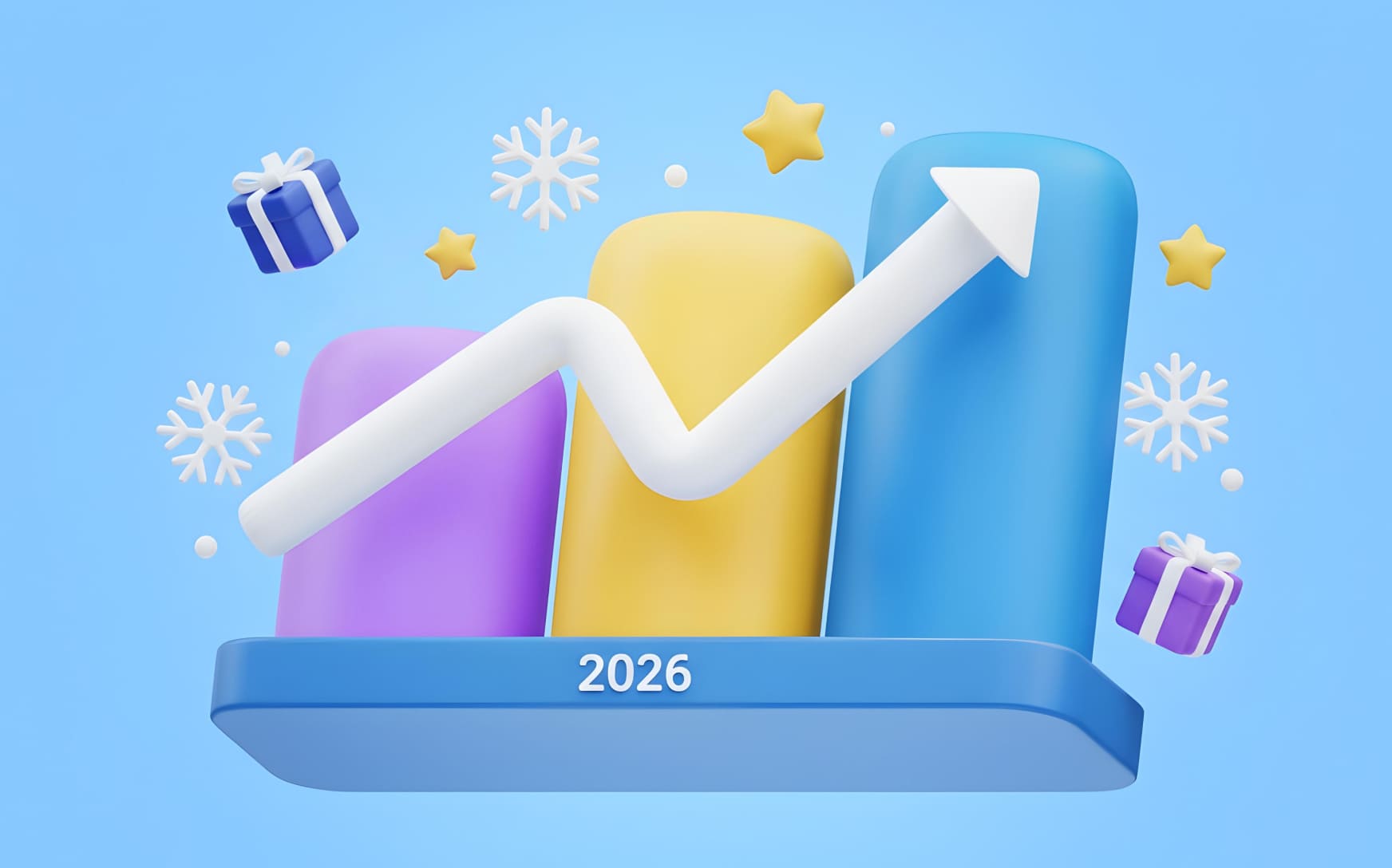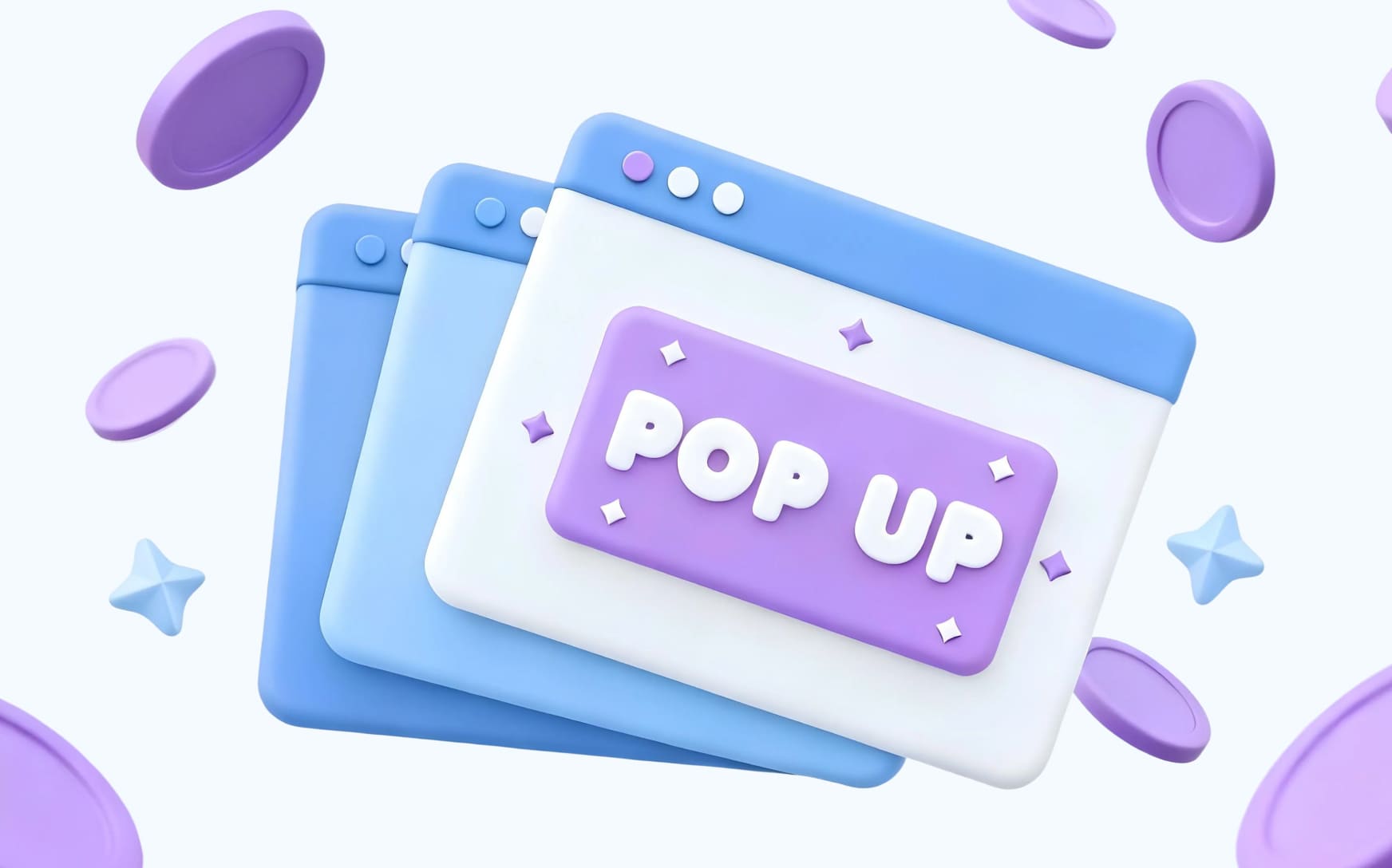Top dating landing pages and templates for 2025 are mobile-first, fast-loading and segment-specific. Winning formats are direct sign-up forms, niche-specific designs and interactive pre-landings like chatbots or quizzes. Testing both pre-landing and direct-to-landing flows is key for higher conversions in the dating vertical.
In 2025, the dating vertical is more competitive than ever. Affiliates and media buyers no longer win campaigns just by picking the right offer — they win by mastering every step of the funnel. From the very first click on a push ad to the final conversion on a dating landing page, every element must be optimized for the target audience and segment you want to reach.
This article covers the best pre-landing for dating strategies, latest design trends and ready-to-use dating landing page templates that are proven to convert. You’ll see pre-landing examples, learn when to use them (and when to go direct-to-landing) and get expert tips on building pages that stand out in the crowded dating industry. Whether you work with push, pops or any other ad format, this will help you build pages that turn into real sign-ups.
The Dating Vertical in Affiliate Marketing
The dating vertical is one of the most resilient and profitable segments in affiliate marketing. It covers the promotion of dating platforms, sites, apps, and services — ranging from mainstream to niche and adult offers — targeting different segments of users and monetizing through registrations, subscriptions, or micro-transactions.

Market Size & Growth
- As of 2022, the global online dating market was estimated at USD 9.65 billion, with projections to reach USD 17.28 billion by 2030, growing at a 7.4% CAGR.
- In 2025, the dating app market alone is expected to approach USD 13.1 billion, with over 500 million active users worldwide, propelled by smartphone adoption and wider internet access.
- Affiliate-specific stats: In 2024, the affiliate-era dating vertical was worth around USD 10 billion, with a projected 7.5% year-on-year growth for years to come.
Why Affiliates Love the Dating Vertical
- Evergreen demand: People across demographics — young or old, mainstream or niche — need connections.
- Flexible offers: Affiliates can choose from mainstream platforms like Tinder or niche/adult segments, by geo, category and platform.
- High traffic potential: Strong volumes from Tier-1 to Tier-3 geos, with relatively low payouts — typically around USD 1–2 per registration, depending on offer and region.
Quick Summary Table
| Key Point | Insight |
| Dating vertical (general) | Promotes dating offers — mainstream, niche, adult — via affiliate models |
| Market size & growth | $9.65B (2022) → $17.3B (2030); dating app market ~$13B (2025) |
| Affiliate appeal | Evergreen demand, flexible offers, broad geo reach, stable traffic |
| Industry trends | Main players flat or declining, niche/AI-centric apps (e.g., Hinge) rising |
What Are Pre-Landings and Landing Pages in Dating?
In affiliate marketing, especially in the dating vertical, the sales funnel is more than just a single page — it’s a sequence of touchpoints that guide the user from the first impression to conversion. Two key elements in this funnel are the pre-landing for dating and the dating landing page.
Pre-Landing for Dating
A pre-landing page is an intermediate step between the ad creative and the offer’s final landing page. Its main job is to prepare and “warm up” the user before they see the main offer. This can include:
- Engaging content such as quizzes (“Find your perfect match in 3 questions”).
- Stories or testimonials to build trust.
- Short polls to filter or segment the audience.
Pre-landings are used, for example, with push ads — where the click from a dating vertical creative leads to a pre-landing page, and only then to the main offer.
Dating Landing Page
The dating landing page is the final conversion point — the page where the user registers, subscribes or pays. Here, design and content must match what was promised in the ad and pre-landing.
A well-optimized dating landing page design includes:
- Fast load speed, especially on mobile.
- Clear call-to-action (CTA).
- Visual consistency with the pre-landing and ad creative.
- Elements that build trust: security badges, reviews, recognizable brand logos.
Push vs. Pops Funnel Structure
The funnel structure depends on the ad formats you use:
- Push ads: Creative → Pre-Landing → Landing Page.
- Pop ads: The pre-landing and landing page are often merged, so the user lands on a page that serves as both the initial hook and the conversion point. Here, the site itself is the main creative.
Role of Targeting and Segmentation
Whether to use a pre-landing for dating or go direct-to-landing depends on:
- Target geo: Some regions require more user education before conversion.
- Audience segment: Warmer audiences (retargeting) may skip pre-landings, while cold traffic often benefits from them.
- Offer type: High-commitment offers (paid subscriptions) usually convert better with a pre-landing, while simple lead-gen offers can work direct-to-landing.
Pro Tip: Test Both Funnels with ROIads
ROIads is a global advertising platform with premium push and pop traffic in 150+ geos — the ad formats most affiliates use in the dating vertical. With advanced targeting, uniq AI bidding technology, CPA goal optimization and Micro bidding tool, ROIads lets you test Pre-Landing → Landing Page and Direct-to-Landing funnels.
Whether you’re testing new dating landing page templates or optimizing existing ones, the platform’s traffic segmentation and premium sources will help you find the winning funnel faster.
Pre-Landings in the Dating Vertical
In the dating vertical, a pre-landing is crucial in converting cold traffic into engaged prospects. Its purpose is to warm up users, pre-qualify them and increase the chances of conversion on the final dating landing page.
Main Goals of Pre-Landing Pages
- Warm-up interest: Get users emotionally and mentally prepared before they see the actual offer.
- Filter unqualified clicks: By adding simple questions, polls or engagement steps you keep only those likely to convert.
- Match ad intent with landing experience: Ensure the user’s expectation from the ad creative aligns with the next page.
Dating Pre-Landing Examples
Below are three high-performing dating pre-landing examples used in 2025, each for a different audience segment and traffic source.
1. Chatbot Simulation
The first example is a simulation of a personal assistant chatbot asking if the visitor wants to meet a man or a woman.
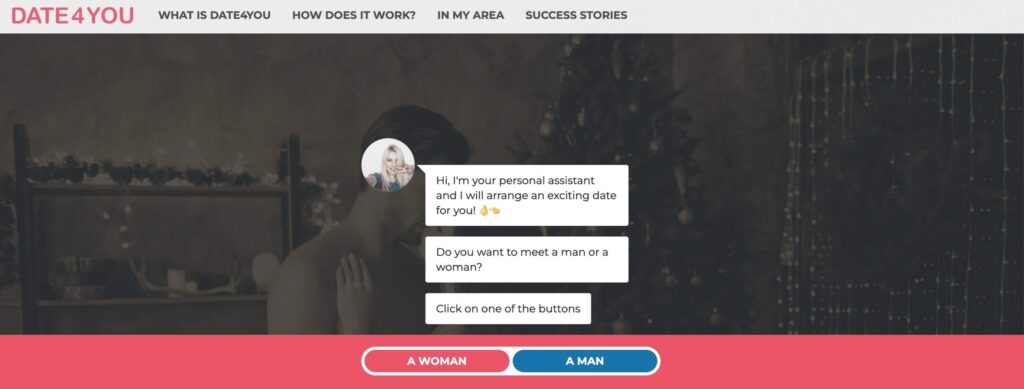
Strengths:
- High engagement rate — users feel they are in an interactive process.
Works well with push ads targeting mobile devices.
Best for: geos with high chat app usage and where conversational UIs are familiar.
2. Native Article
The second example is a lifestyle blog article about relationships, love and well-being.
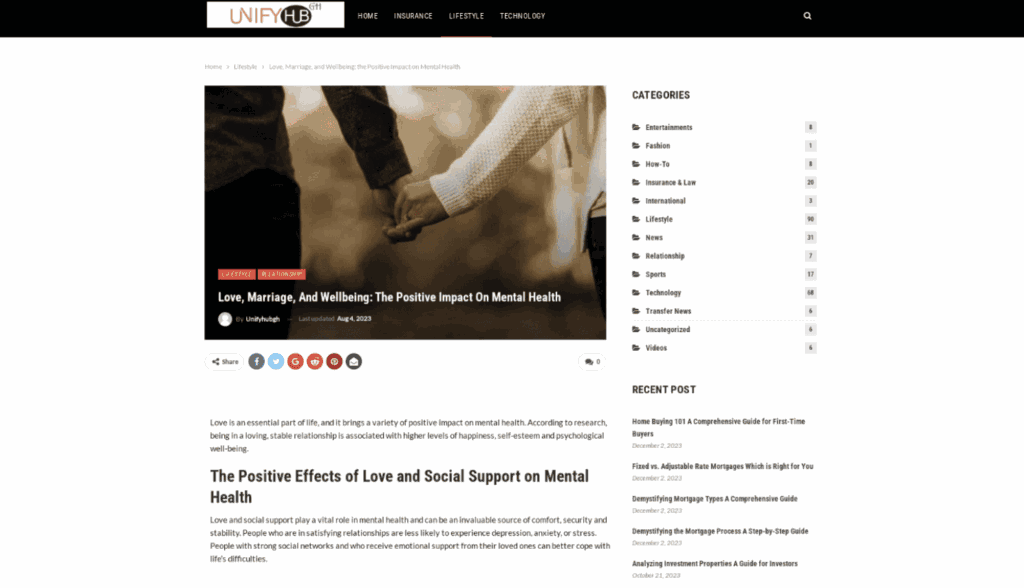
Strengths:
- Blends with content, reduces ad blindness.
- Builds trust before the pitch, especially good for Tier-1 audiences.
Best for: Pops traffic where the user lands directly on content-style pages.
3. Video Background + Age Check
The third example is a blurred or suggestive video background with an age verification question.
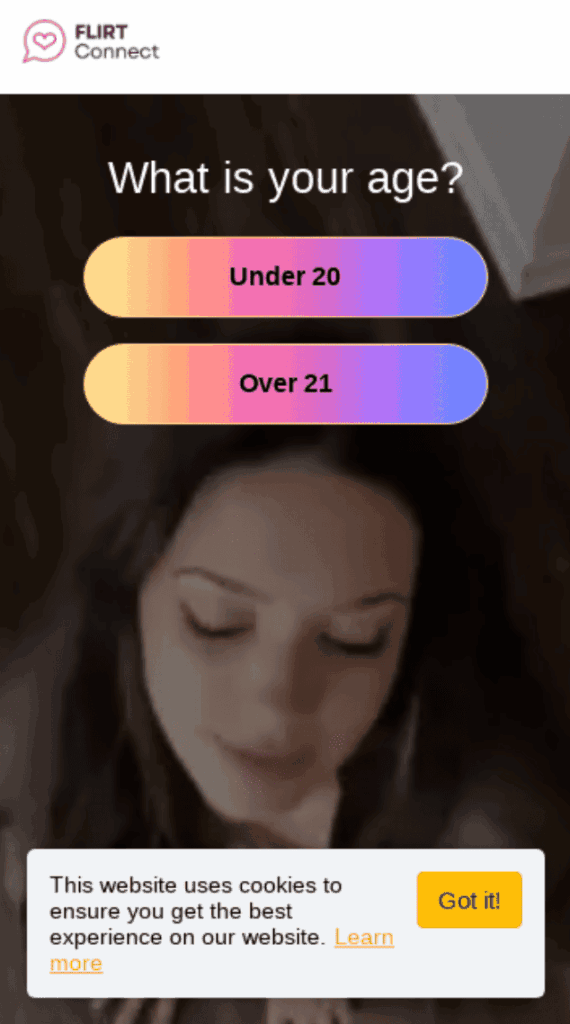
Strengths:
- Instant intrigue and visual hook.
- Age check serves as both a legal filter and engagement step.
Best for: Adult dating offers in markets with strict compliance rules.
When Pre-Landings Are Essential
Use a pre-landing for dating when:
- You are running cold traffic from push or pop campaigns.
- The offer requires higher commitment (subscription payment, ID verification).
- You need to segment users by preference, gender or location.
When You Can Skip Pre-Landings
Go direct-to-landing when:
- The offer is a low-friction sign-up (email only, no payment required).
- Retarget warm audiences who already interacted with your brand.
- Use ultra-relevant dating landing page templates for impulse conversions.

Roya, Emotional Damage Officer & Supreme AI Arbitragist at ROIads
Landing Pages for Dating Offers
The dating landing page is where the conversion happens—whether it’s a free registration, a paid subscription or another desired action. In 2025, the dating vertical is super competitive so you need to combine strong visual design, clear value proposition and smooth UX to maximize conversion rates.
Core Principles of Dating Landing Page Design
- Immediate clarity — The user must understand what the site is about instantly.
- Fast mobile load speed — A key factor in push and pop traffic campaigns.
- Strong CTA — Use action-oriented buttons (“Find Love Now”, “Join Free Today”).
- Visual trust signals — Include security badges, verified icons and testimonials.
- Localized content — Adapt language, images and tone to the target geo and segment.
Dating Landing Page Templates: Popular Styles in 2025
Here are four dating landing page templates, with examples from real campaigns.
1. Direct Registration Form
EliteLove — split layout with model image on the left and detailed sign-up form on the right.
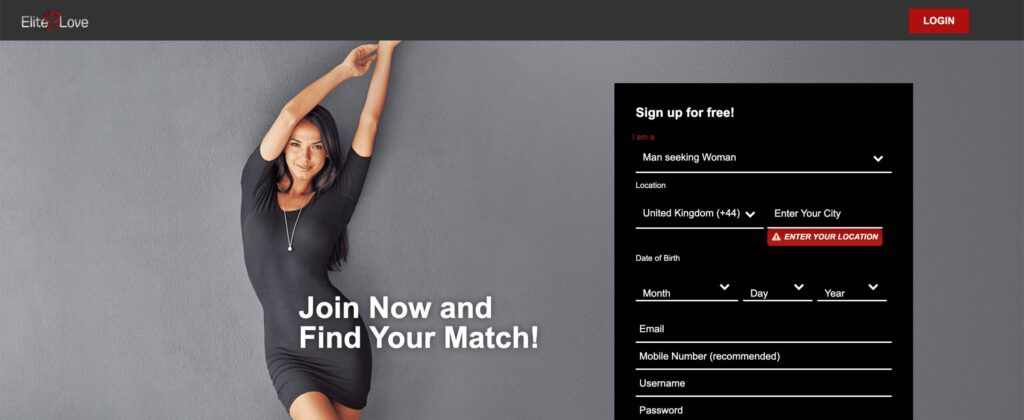
Strengths:
- Immediate CTA (“Join Now and Find Your Match”).
- Works well for high-intent traffic from pops.
Best for: Geos with simple user behavior and low bounce rates.
2. Youth-Oriented Minimalist Design
ChatUpPlace — soft colors, big friendly photos, minimal text, clear “Sign Up” button.
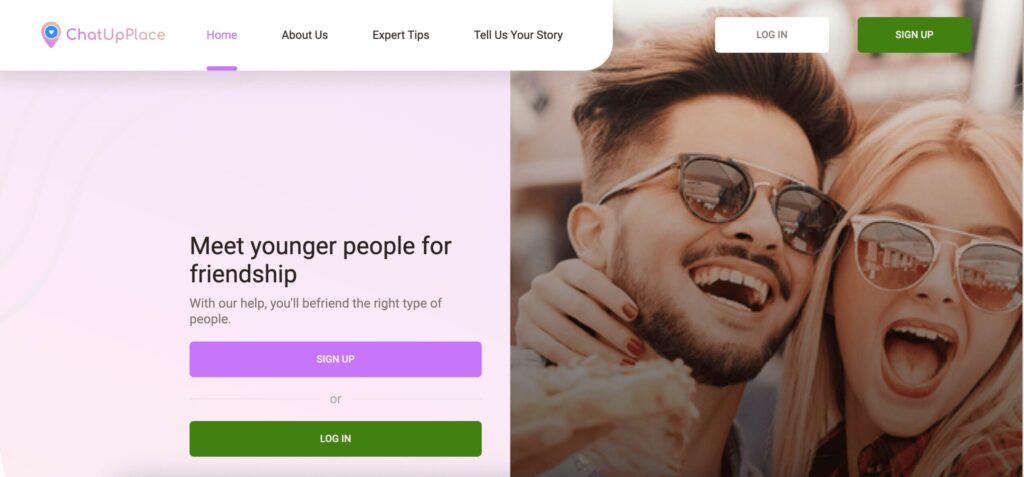
Strengths:
- Appeals to younger audiences who want quick interactions.
- Mobile friendly and clean.
Best for: Tier-1 and Tier-2 markets targeting 18-30 age segments.
3. Niche-Specific Matchmaking
SilverSingles — designed for 50+ singles, with age-appropriate visuals and simple matching options.
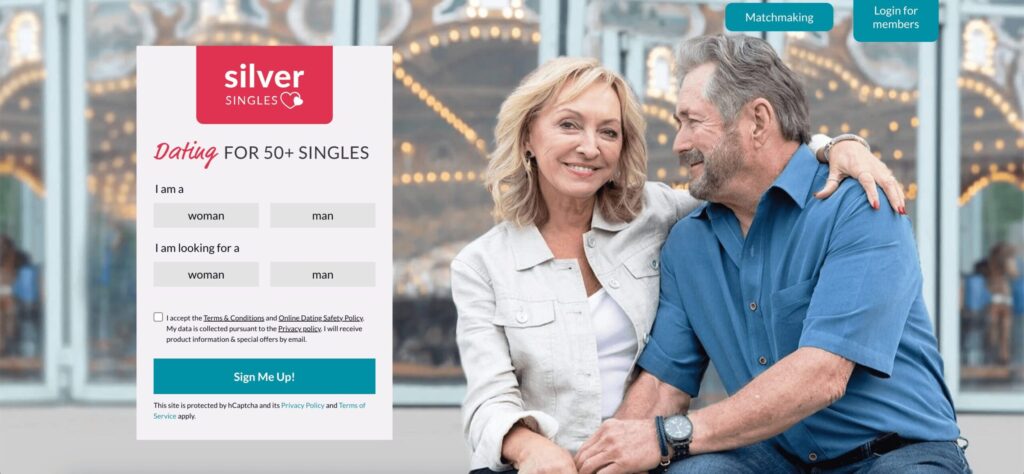
Strengths:
- Builds trust with the older demographic.
- Larger form fields and high contrast buttons for better accessibility.
Best for: Niche offers targeting mature audiences.
4. Faith-Based Community Appeal
Christian Mingle — warm tones, community focus, values-based messaging.
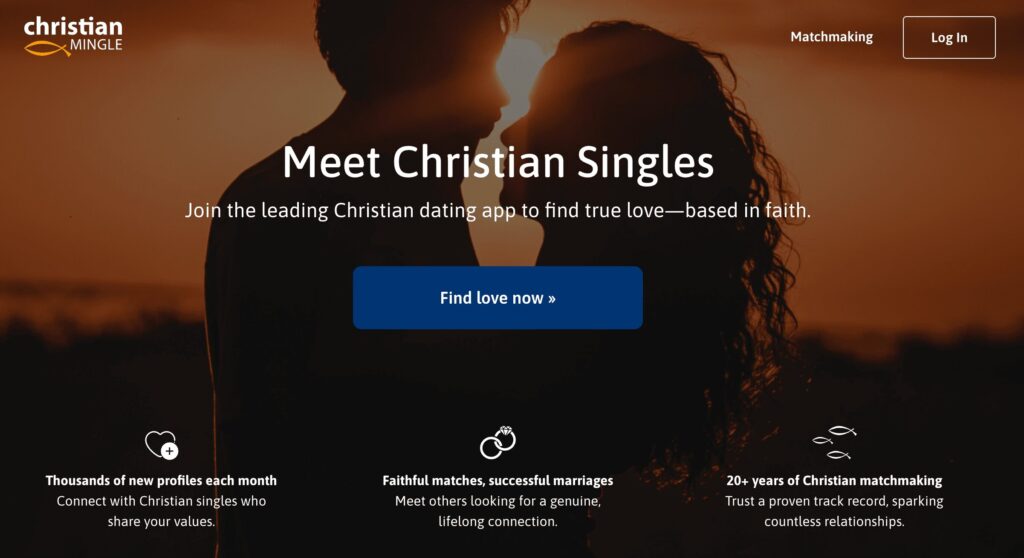
Strengths:
- Creates emotional connection with faith-based users.
- Strong storytelling in the hero section.
Best for: Niche religious dating campaigns, especially in the US.
How to Choose the Right Template
When choosing dating landing page templates, consider:
- Offer type — Casual dating vs serious relationships.
- Target audience segment — Age, interests, cultural background.
- Ad formats — Push traffic benefits from lighter, faster pages; pops can handle heavier content.
- Platform requirements — Ensure compatibility with both desktop and mobile.
Choosing Between Pre-Landing and Direct-to-Landing
In the dating vertical, the decision to use pre-landing for dating or send users directly to the dating landing page depends on your traffic source, audience segment, geo and offer type. Choosing the right funnel structure can make the difference between a break-even campaign and profitable one.
When to Use Pre-Landing vs Direct-to-Landing in Dating Campaigns
| Situation / Condition | Recommended Funnel | Reason |
| Cold traffic from push ads targeting Tier-1 geo | Pre-Landing → Landing Page | Warms up high-cost clicks, improves relevance, and filters out low-quality leads. |
| Pops traffic in Tier-2/Tier-3 geo with high impulsive behavior | Direct-to-Landing | Users are more likely to convert instantly if they land on an aggressive, eye-catching dating landing page template. |
| High-commitment offer (subscription payment, multi-step signup) | Pre-Landing → Landing Page | Reduces drop-off by pre-qualifying and preparing users before asking for detailed information. |
| Low-friction lead-gen offer (email only, single-step form) | Direct-to-Landing | No need for extra steps; direct sign-up maximizes conversion speed. |
| Target audience segment requires education (niche dating: religious, senior, etc.) | Pre-Landing → Landing Page | Allows explanation of benefits, trust-building, and segmentation before the final page. |
| Retargeting warm audience (users who visited before or clicked on similar offers) | Direct-to-Landing | These users already know the offer—extra steps may cause unnecessary friction. |
| Adult dating in geos with compliance restrictions (age verification required) | Pre-Landing → Landing Page | Age gates or legal disclaimers are best placed before the main page to comply with regulations. |
Expert Tips for Funnel Selection
- Test both options: Even if logic says one way, A/B test.
- Match pre-landing to creative: A quiz ad should lead to an interactive pre-landing, not a static form.
- Watch the load speed: Pops can handle heavier designs; push traffic needs lighter, mobile-first templates.
- Segment by geo: Some markets need more persuasion (e.g. Tier-1), others want immediate offers (e.g. Tier-3).
Tips for High-Converting Dating Pre-Landings and Landing Pages
For Pre-Landings:
- Keep it short — 2-3 interaction steps max.
- Use dating pre-landing examples that match the ad (chatbot, quiz, native article).
- Add micro-commitments — gender choice, age verification, location question.
- Match visual and messaging with the ad creative.
For Landing Pages:
- Prioritize dating landing page design for mobile-first speed and clarity.
- Use dating landing page templates proven to work in your geo and category.
- Keep CTAs visible at all scroll depths.
- Add trust elements — user reviews, badges, secure payment icons.
- Adapt visuals and language to the target segment.
Conclusion
Success in the dating vertical is about more than just choosing a high-payout offer. The real impact comes from aligning your ad formats, pre-landing for dating strategy, and dating landing page design with your audience’s behavior. Test, adapt, and iterate — and use proven templates and examples to save time and boost ROI.
Launch Your Next Dating Campaign with ROIads
With ROIads, you get premium push and pop traffic, advanced targeting by geo, device, and other technical segments, plus optimization tools like AI bidding technology and Micro bidding to maximize conversions. Our platform offers dating landing page templates and traffic segmentation that help you hit the ground running — whether you’re testing new pre-landing examples or scaling proven winners.
Don’t wait for the competition to take your traffic. Launch your next dating vertical campaign on ROIads today and turn clicks into long-term profit.
FAQ: Dating Landing and Pre-landing Examples
How to design an effective dating landing page?
An effective dating landing page design starts with a clear value proposition and a strong call-to-action. Use high-quality, relevant images that resonate with your target segment, keep the copy concise, and ensure visual consistency with the ad and pre-landing for dating. Trust signals like testimonials, security badges, and verified icons help reduce friction. Always match the tone, style, and messaging to your dating vertical offer category and geo.
How to optimize dating landing pages for mobile users?
In 2025, over 75% of dating traffic comes from mobile, especially when using push ads and pops. To optimize:
- Use a mobile-first responsive template.
- Keep load time under 3 seconds.
- Make CTAs thumb-friendly and visible without scrolling.
- Compress images without sacrificing quality.
- Simplify forms — fewer fields mean higher conversion rates.
Test your dating landing page templates on multiple devices and platforms before scaling.
How long should a dating landing page be?
For most dating vertical campaigns, shorter is better — especially in pops traffic where attention spans are minimal.
- Low-friction offers (email-only sign-up): 1 screen or fold.
- High-commitment offers (paid subscription, multi-step registration): 2–3 short sections with clear CTAs at each step.
Don’t use long-scrolling pages unless you’re in a niche that requires detailed explanation (e.g., senior dating, faith-based communities).
What elements should be included in a dating landing page?
Every high-converting dating landing page template should have:
- Headline — Direct, benefit-driven, relevant to the ad.
- Hero image/video — Reflects your target segment and category.
- CTA button — Clear, contrasting, and action-oriented.
- Short form or quiz — Depending on the funnel type.
- Trust signals — Testimonials, reviews, secure icons.
- Mobile-optimized layout — Responsive design that loads fast on all devices.
These elements ensure the page aligns with your industry, traffic platform, and chosen ad formats.






